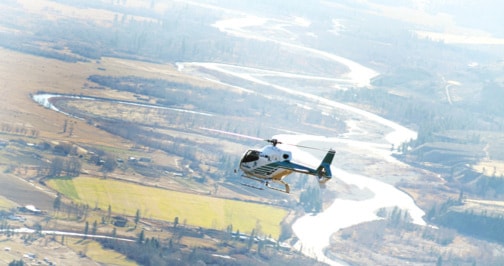It now appears there will not be a national park in the South Okanagan/Similkameen after the province shelved its interest in the plan for the “foreseeable future.”
In a telephone interview this week, B.C. Environment Minister Terry Lake told the Western News he has not completely closed the door but, for now at least, it is a dead issue.
“While we know there is some support it’s obvious to us there is still a lot of local resistance, so we don’t want to impose something on the local area that doesn’t have a strong level of support,” said Lake. “When you do something of this magnitude you want more than 51 per cent, you need a lot of support.
“I made this clear to my federal counterpart (Peter Kent) and he’s assured me he’s told Parks Canada that at this time it’s just not something we (the province) are interested in moving forward with.”
According to the provincial ministry, Parks Canada cannot establish a national park “without the support/agreement of the Government of British Columbia.”
Attempts to reach the federal environment minister about the future of the park process, which has been underway for nearly a decade, were unsuccessful.
Bruno Delesalle, project manager for the South Okanagan-Lower Similkameen for Parks Canada, was in Ottawa Thursday, but was unable to comment on the matter.
“We’re not saying this (park) will never happen,” said Lake. “But it’s not going to happen in the foreseeable future. I think you always want to keep your options open, 20 years from now or whenever the conversation may have changed.”
Grand Chief Stewart Phillip, chair of the Okanagan Nation Alliance, was also not optimistic about the park becoming a reality, saying damage from the initial government handling of the plan would also need to be repaired.
“There has been somewhat of an effort by the federal government and to a lesser extent the province (to correct past problems), but it’s my understanding we’re a very long ways from embracing a substantive process that would lead to the creation of a park in the foreseeable future,” said Phillip. “They (governments) were very disrespectful and unilateralist in their approach and we were told we had to accept the inevitability of the process which we rejected.”
A memorandum of understanding was signed between the two governments in 2003 to co-operate in assessing the feasibility of establishing such a park. Phillip said First Nations were not allowed to participate.
Meanwhile, Lake pointed out his government is well aware of the sensitive ecological nature of the region, which is why some lands have been set aside as protected under the provincial land and resource management plan.
Park proponents have criticized that process as being ineffective.
“Also, I worked on the ranching task force and I know because ranching is very big where I come from in Kamloops that some of the best stewards of the environment are cattle ranchers,” said the minister.
One person who hopes the province will have a change of heart is B.C. Southern Interior MP Alex Atamanenko.
“I think this decision is premature and my understanding is that Parks Canada is trying to work with First Nations, the ranching communities and others to come up with something that works and I think it would be wise not to make any decisions until that process takes place,” said the MP.
“Obviously it’s a political decision made under pressure and a lot of decisions are made like that. I suspect that pressure is coming from the people who are opposed to the park.”
Lake agreed saying if the public pressure had been more in support of the plan, the decision might have gone the other way.
Atamanenko does maintain it is critical the majority of people in the immediate area be in favour.
“I believe in the concept of a national park, but I also don’t like something pushed down on people and it’s got to have support if it’s going to work,” he said. “But I also don’t trust the provincial government to maintain that area as a protected area — this government or any other government. “Will this area remain a protected area? What if there is another government? What if there is pressure from the mining industry? There are so many questions out there.”
